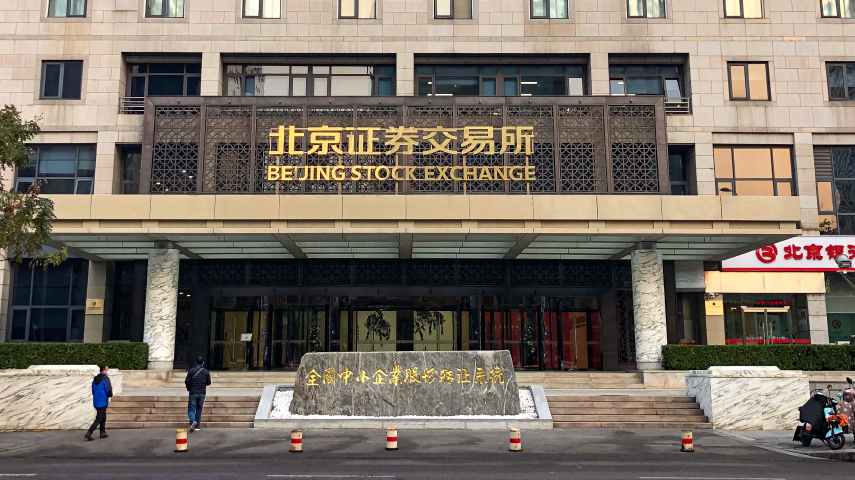On 11 December 2021, the National Equities Exchange and Quotations (NEEQ) and Beijing Stock Exchange (BSE) signed strategic cooperation agreements with 12 state-owned, joint-stock and city commercial banks to provide comprehensive financial services such as credit financing, product investment and IPO (initial public offering) training for budding technology-based enterprises. The BSE was launched on 15 November 2021 as an upgraded version of NEEQ – an equity trading platform for micro, small-sized and often low-quality enterprises – and is aimed to list high-quality and innovative small and medium-sized enterprises (SMEs) that are not large enough to list elsewhere.
The concept of “little giants” – innovative SMEs - to fill gaps in the sectors in industrial equipment, new materials, biomedicine and information technology (IT) – was first put forward by China’s Ministry of Industry and Information Technology (MIIT) in 2011 to set a strategic direction for such companies that form the backbone of the Chinese economy. In 2018, in line with China’s technology ambitions, MIIT emphasised the cultivation of 600 innovative startups that are regarded as hidden champions in their respective industries. Later in 2021, the central government put particular focus on the “little giants” and encouraged financial institutions to provide "efficient" financial services. Concurrently, with the launch of the BSE, city and regional commercial banks have taken up the role of "helpful companions" to SMEs.
For years, China’s SMEs have encountered obstacles in accessing credit, with extra costs and limited exposure to equity financing. The American Economic Review in an article discussed the issue of Chinese start-ups with high productivity that are often financially constrained and must rely on retained earnings to finance investments. This phenomenon is particularly true for technology-based SMEs that lack the necessary conditions, such as ownership of real property, consistent profitability, data transparency and fair valuation of technology patents for banks and venture capitalists to conduct due diligence. Furthermore, they do not have the economies of scale and can ill afford the burdensome underwriting fees required for IPOs.
A recent study focusing on SMEs in the United Arab Emirates finds that the success of SMEs is positively correlated with financing resources from financial institutions and governmental funding programmes, and access can be enhanced by firms’ technological innovations. However, policymakers need to be aware of the potential risks in nurturing SMEs, in particular their relative lack of management skills and the disincentive effects of supporting policies. A research by the United Kingdom (UK) government found that the capacity of management team is critical for SMEs’ growth, yet 16% of UK SMEs have underdeveloped management skills. The experience from UK is especially noteworthy for companies during expansion periods when leadership and management skills have to keep pace with firms’ growing scale.
While the current definition of “little giants” sets baseline requirements on type of industries, level of technological advancements and threshold of financial performance stipulated by MIIT, disincentives may arise as some companies choose to keep themselves below a certain threshold in order to retain preferential treatments. The policy and definition of “little giants” should also be contingent on county-specific factors as conditions in different regions of China vary extensively.
As for city and regional commercial banks on the front line of connecting SMEs in their communities, the market remains untapped. According to China Banking and Insurance Regulatory Commission, as of September 2021, city commercials banks represented only 14% of total inclusive loans to small and micro businesses, while state-owned banks and rural commercial banks accounted for 34% and 32% of the total number respectively. Understandably, state-owned banks have a bigger share because of their affiliations. Meanwhile, rural commercial banks have limited capacity to attract large companies result and choose to focus on local SMEs. Nonetheless, city commercial banks in large and medium-sized cities often have considerable asset scale, thus a natural tendency to serve big clients. Thanks to the launch of BSE, those city commercial banks are now seeking to secure technology-based SMEs, motivated by strong incentives for business expansion.
In 2020, there were more than 220,000 technology-based SMEs, a 47% surge from the number in 2019. The number is expected to climb further after 2021 amid increased attention on the “little giants”. For those technology-centric companies, raising funds from the credit and capital markets are more aligned with their business operations. In response to the impending boom in the market, city and regional commercial banks can cooperate with venture capitalists as well as local governments to retain promising clients – "little giants" with great potential to list on BSE - by providing diversified financial services such as asset management, financing scheme and investment banking services.




All Comments